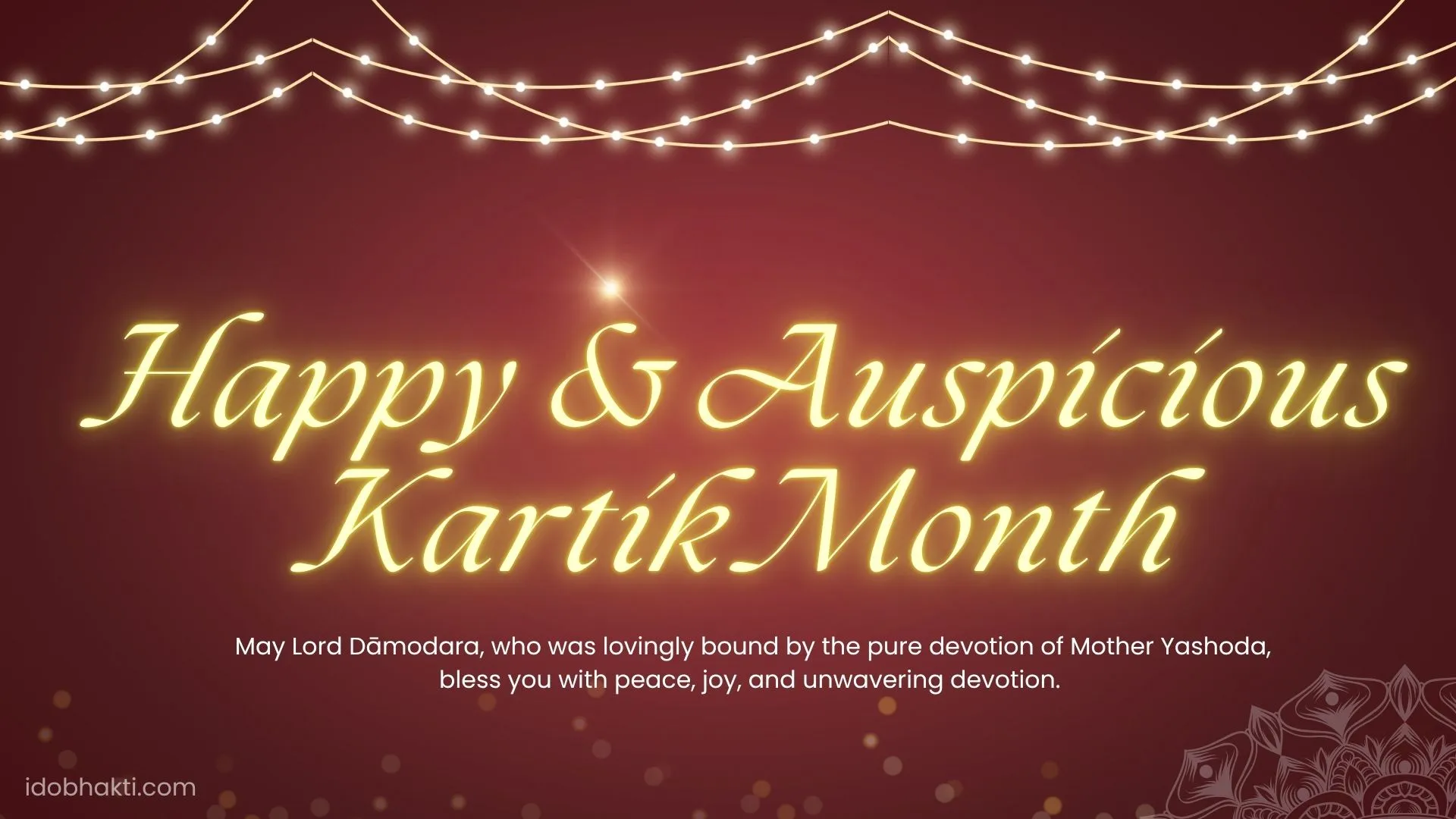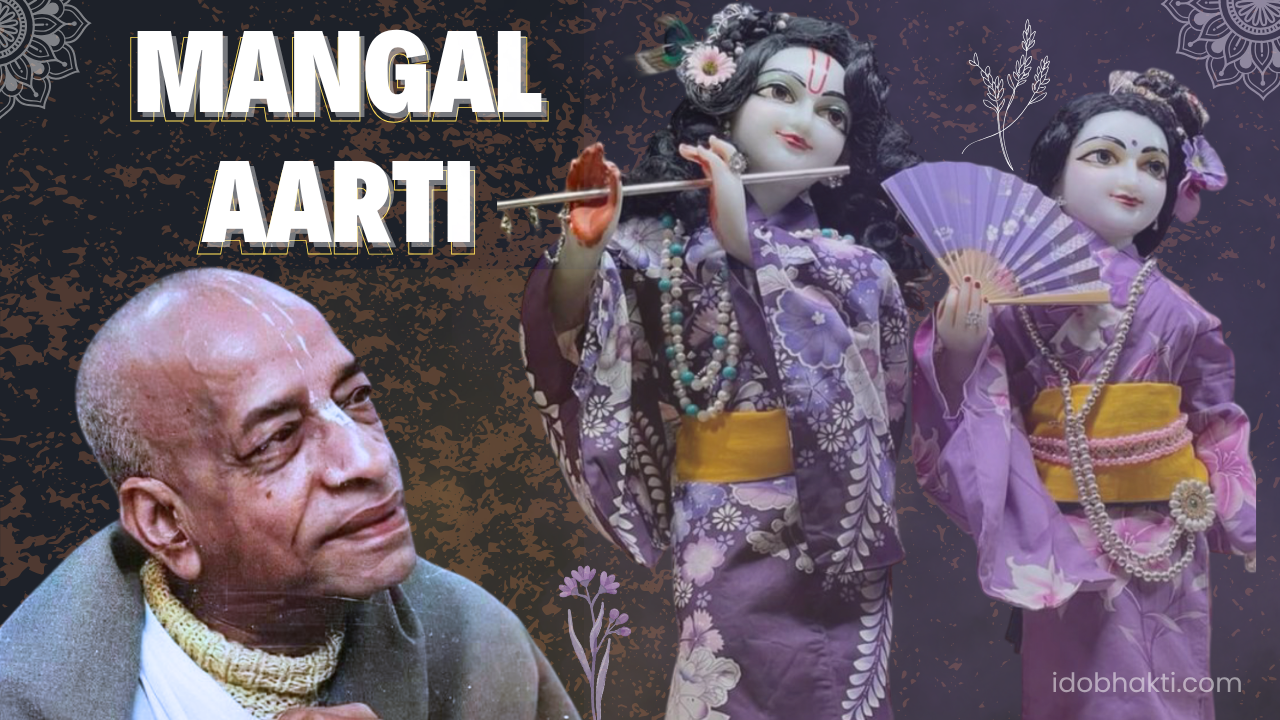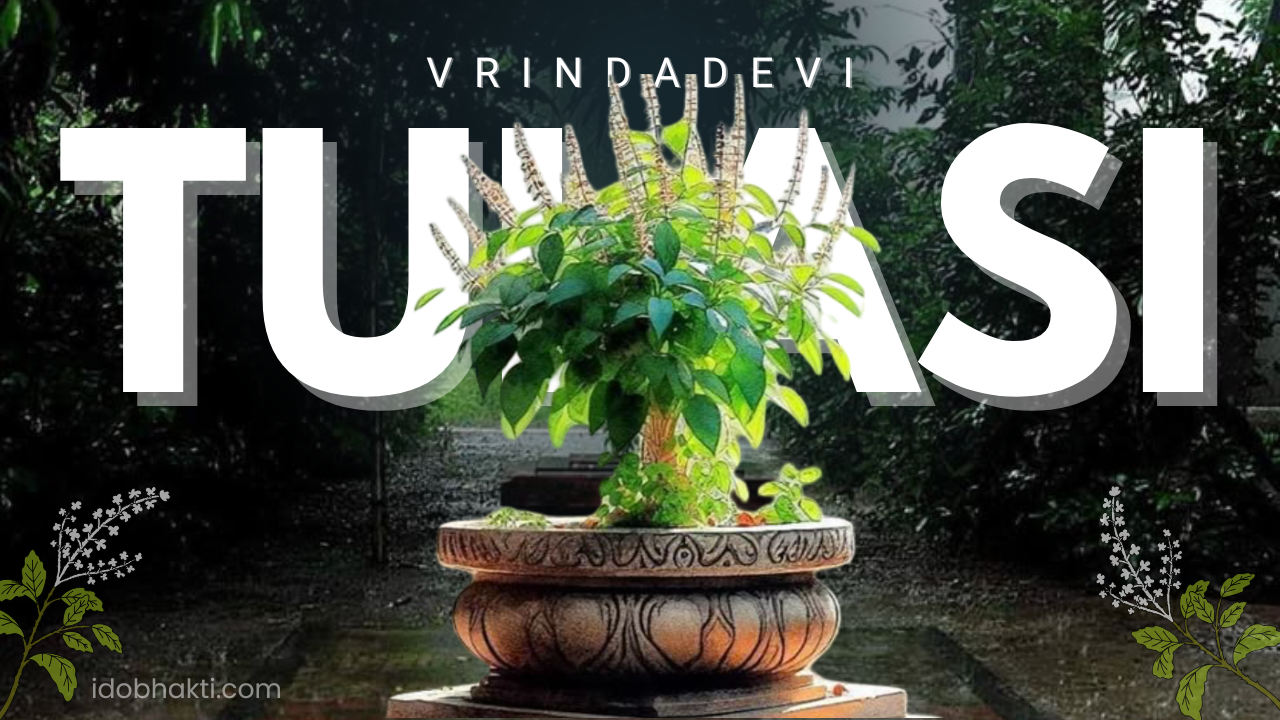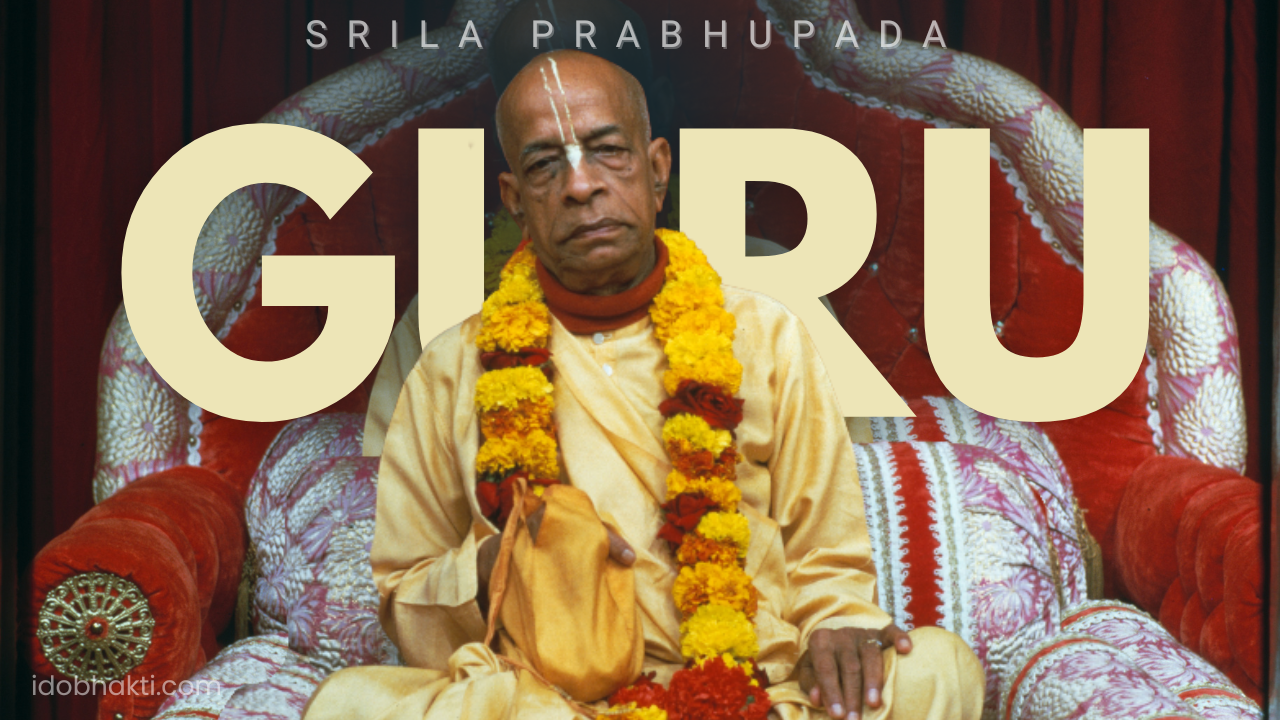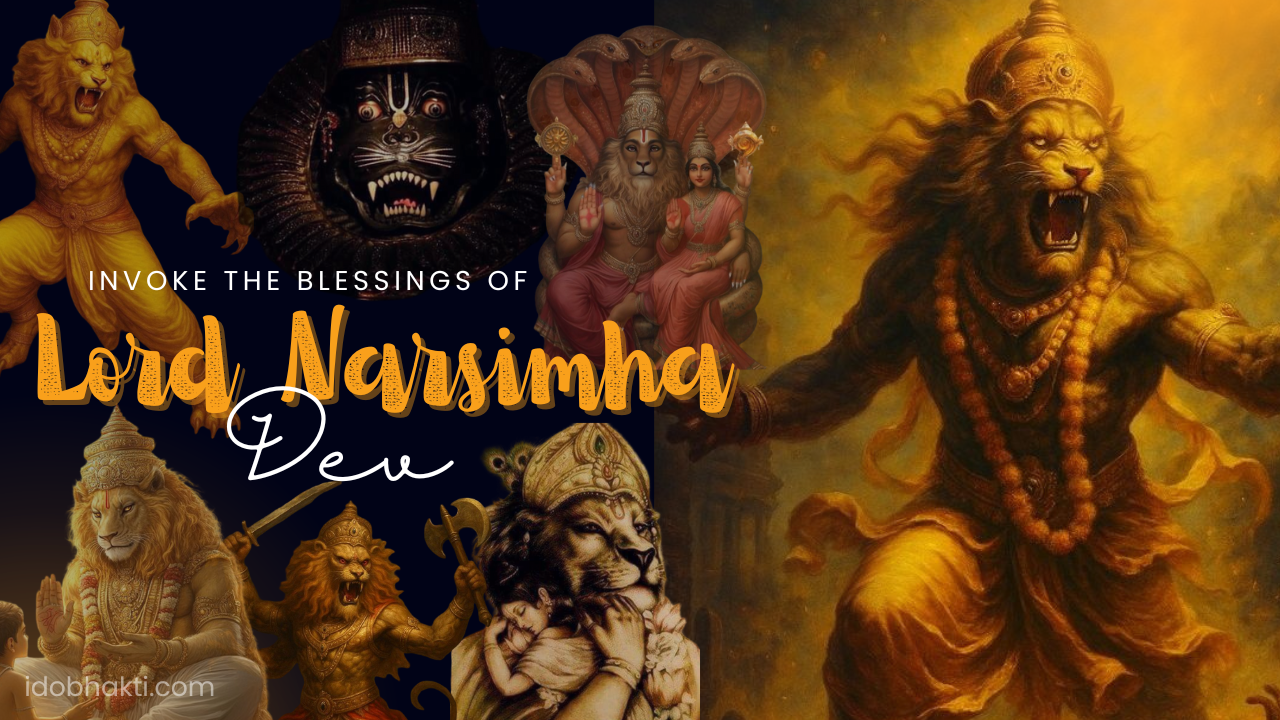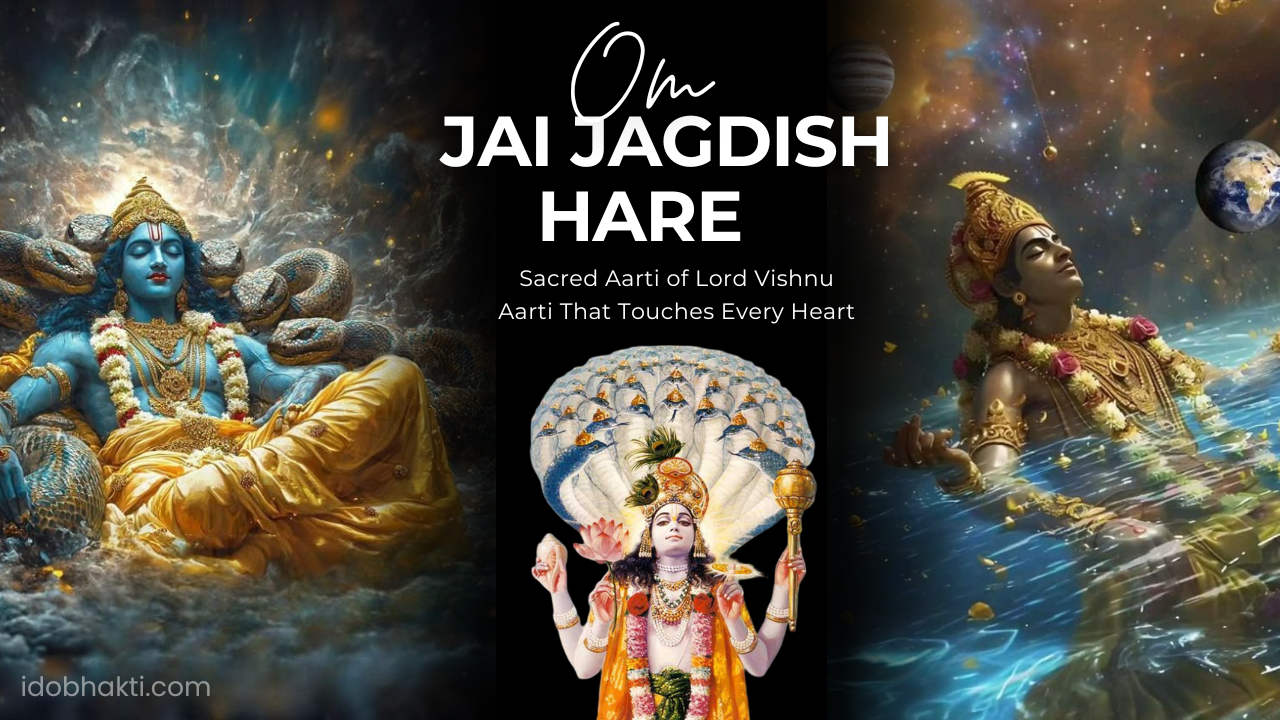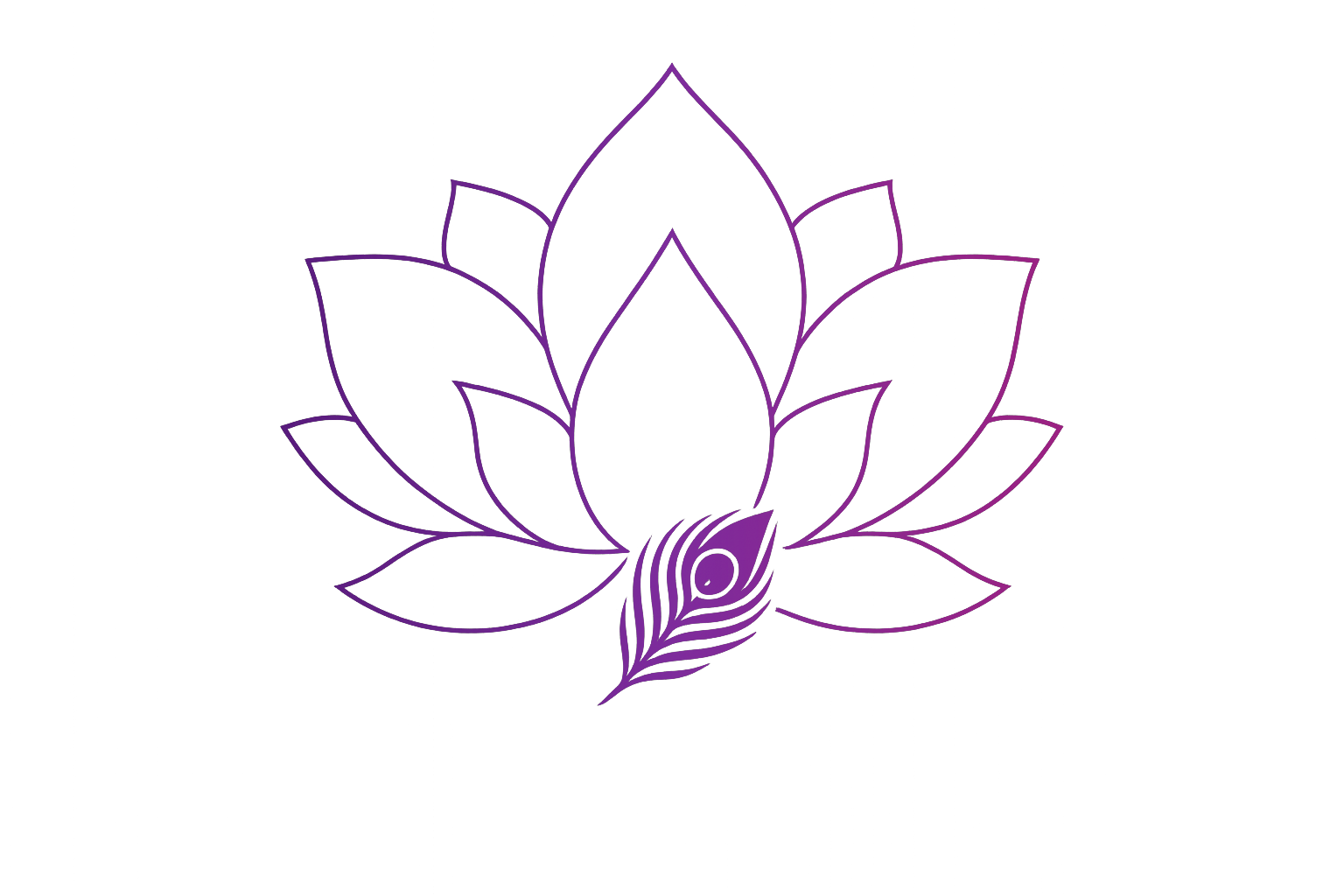
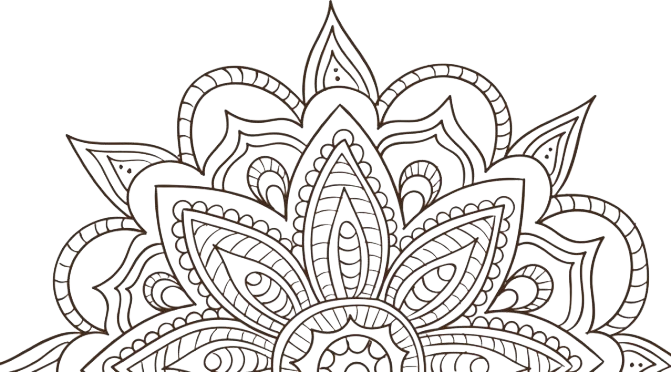

Damodarashtakam: The Divine Lila of Lord Krishna Bound by Love
The Damodarashtakam is a beautiful prayer composed by Satyavrata Muni and written by Vyasa Deva. It describes the Damodara Lila of Lord Krishna, in which Mother Yashoda chases little Krishna, who is crying like an ordinary child. However, in reality, he is the Supreme Almighty Lord, the source of all creation, whose very existence makes even fear itself tremble.

Introduction: The Month of Kartika and the Glory of Damodara
Among the most sacred months in the Vaishnava calendar is the Kartika month, also known as Damodara month. This month is especially dear to Lord Krishna, for it commemorates one of His most enchanting and intimate pastimes — the Damodara Lila, where the Supreme Personality of Godhead was bound by the love of His devotee, Mother Yashoda.
During this holy month, devotees all over the world light lamps daily and sing the Damodarashtakam, a beautiful eight-verse prayer that glorifies Lord Krishna as Damodara, the one whose belly was tied with a rope by His mother. This prayer, originally composed by Satyavrata Muni and recorded by Srila Vyasadeva in the Padma Purana, captures the essence of Bhakti (pure devotion) — that the Supreme Lord can only be conquered by love.
As stated in Sri Hari-bhakti-vilasa (2.16.198):
“In the month of Kartika one should worship Lord Damodara and daily recite the prayer known as Damodarashtakam, which has been spoken by the sage Satyavrata and which attracts Lord Damodara.”
Through these verses, devotees remember Krishna not as a distant God but as the tender, mischievous child of Gokula — bound not by power, but by the pure love of His mother.
The Story Behind Damodarashtakam: Krishna Bound by Love
The Damodara Lila is described in the Srimad Bhagavatam (10th Canto) and elaborated upon by Vaishnava acharyas like Srila Jiva Goswami, Srila Rupa Goswami, and Srila Prabhupada.
One day in Gokula, Mother Yashoda was churning butter for her beloved Krishna. Seeing her working hard, little Krishna wanted her attention and began to demand milk. When Yashoda temporarily left to tend to the boiling milk, Krishna, angry at being ignored, broke the butter pot and ran away, smearing butter all over Himself.
When Yashoda discovered His mischief, she picked up a stick and ran after Him. Out of fear, Krishna began to cry and flee — but finally, the merciful mother caught Him. Wanting to discipline Him, she tried to bind Him with a rope, but the rope was always two fingers too short.
After many attempts and by Krishna’s own mercy, she was finally able to tie Him — symbolizing that God can only be bound by two things: our endeavor and His grace.
This lila demonstrates that though Krishna is the Supreme Lord — the creator of universes — He chooses to be conquered by the pure love of His devotees. It is this sublime truth that Satyavrata Muni expresses through the verses of Damodarashtakam.
Damodarashtakam: The Eight Divine Verses
Verse 1: The Supreme Lord in the Role of a Child
namamisvaram sac-cid-ananda-rupam
lasat-kundalam gokule bhrajamanam
yasoda-bhiyolukalad-dhavamanam
paramrstam atyantato drutya gopya
“I bow down to the Supreme Controller, Sri Damodara, whose form is the embodiment of eternity, knowledge, and bliss. His glistening earrings swing playfully as He runs in fear of Mother Yashoda, who finally catches Him from behind.”
The first verse opens with an act of surrender — namami, meaning “I bow down.” Satyavrata Muni immediately establishes that the one being described is Ishvara, the Supreme Lord. Yet this same Ishvara appears as a small child, crying and running from His mother. This paradox — the omnipotent Lord acting as a helpless child — reveals the sweetness (madhurya) of Krishna’s pastimes.
Here, Krishna’s divinity does not diminish His humanity; instead, His childlike innocence enhances His glory. Even fear personified fears Him, yet He fears His mother’s stick. Such is the power of bhakti — divine love transforms the Supreme Lord into a child who submits to His devotee.
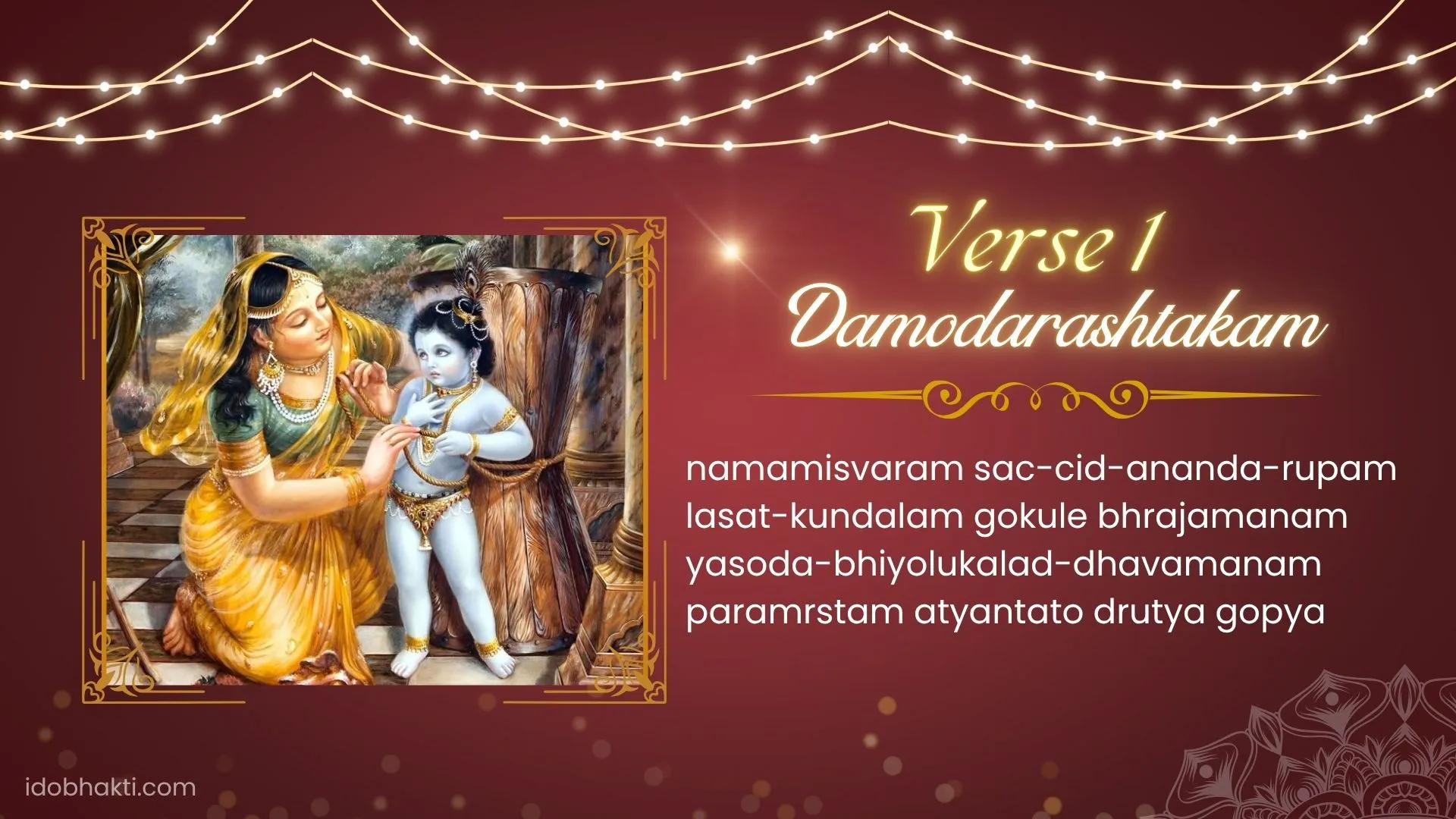
Verse 2: The Lord Bound by Love
rudantam muhur netra-yugmam mrjantam
karambhoja-yugmena satanka-netram
muhuh svasa-kampa-tri-rekhanka-kantha-
sthita-graivam damodaram bhakti-baddham
“He cries and rubs His eyes again and again with His two lotus hands. His breathing quickens in fear, and the pearl necklace on His neck shakes as He trembles. To this Lord Damodara — bound not by rope, but by His mother’s pure love — I offer my humble obeisances.”
This verse captures the tender beauty of Krishna’s emotional exchange with His devotee. Though He could have easily escaped, Krishna allows Himself to be bound — not by rope, but by bhakti-baddham, the cords of love. The description of His tearful eyes, trembling, and gasping breaths evokes compassion and deep affection in the heart of the devotee.
Srila Prabhupada explains that Krishna’s being bound signifies that God becomes subordinate to love. The all-powerful Lord willingly accepts the role of a child to reciprocate His devotee’s affection.
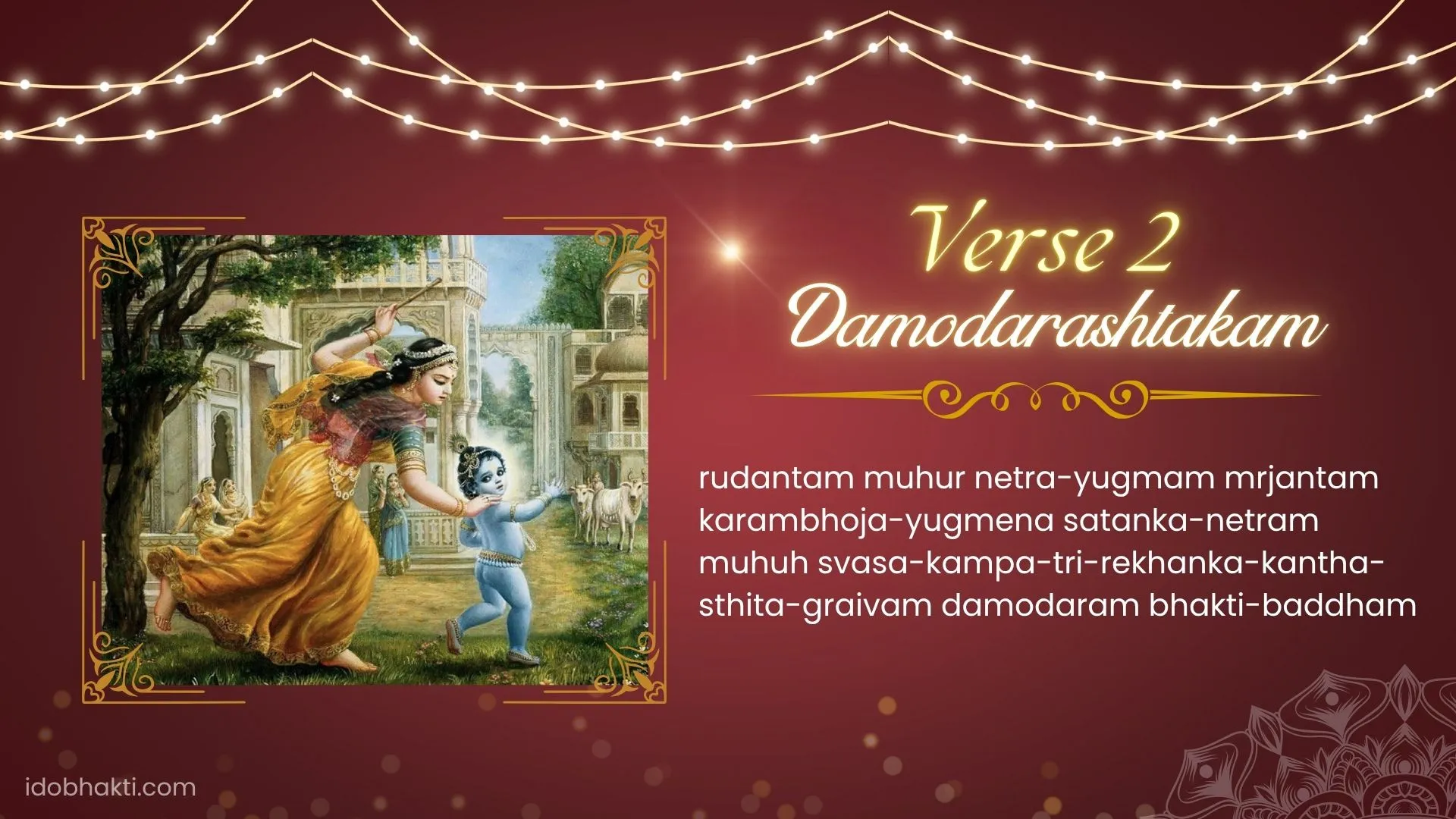
Verse 3: The Lord Conquered by Love
itidrk-sva-lilabhir ananda-kunde
sva-ghosam nimajjantam akhyapayan
tamtadiyesita-jnesu bhaktair jitatvam
punah prematas tam satavrtti vande
“O my Lord, by Your pastimes You immerse the residents of Gokula in an ocean of bliss and reveal to those attached to Your majesty that You are only conquered by the love of Your pure devotees. Again and again, I offer You my obeisances.”
This verse emphasizes the spiritual principle that the Lord can be conquered only by love, not by power, wealth, or knowledge. Those who try to control or understand God through austerity or intellect fail, but the gopis of Vrindavana, through pure love, make Him their playmate, son, and beloved.
Krishna’s lilas (divine pastimes) are not ordinary activities but spiritual exchanges meant to awaken devotion in the hearts of all beings. As Satyavrata Muni says, these pastimes drown the residents of Gokula in an “ananda-kunda” — a pool of spiritual bliss.
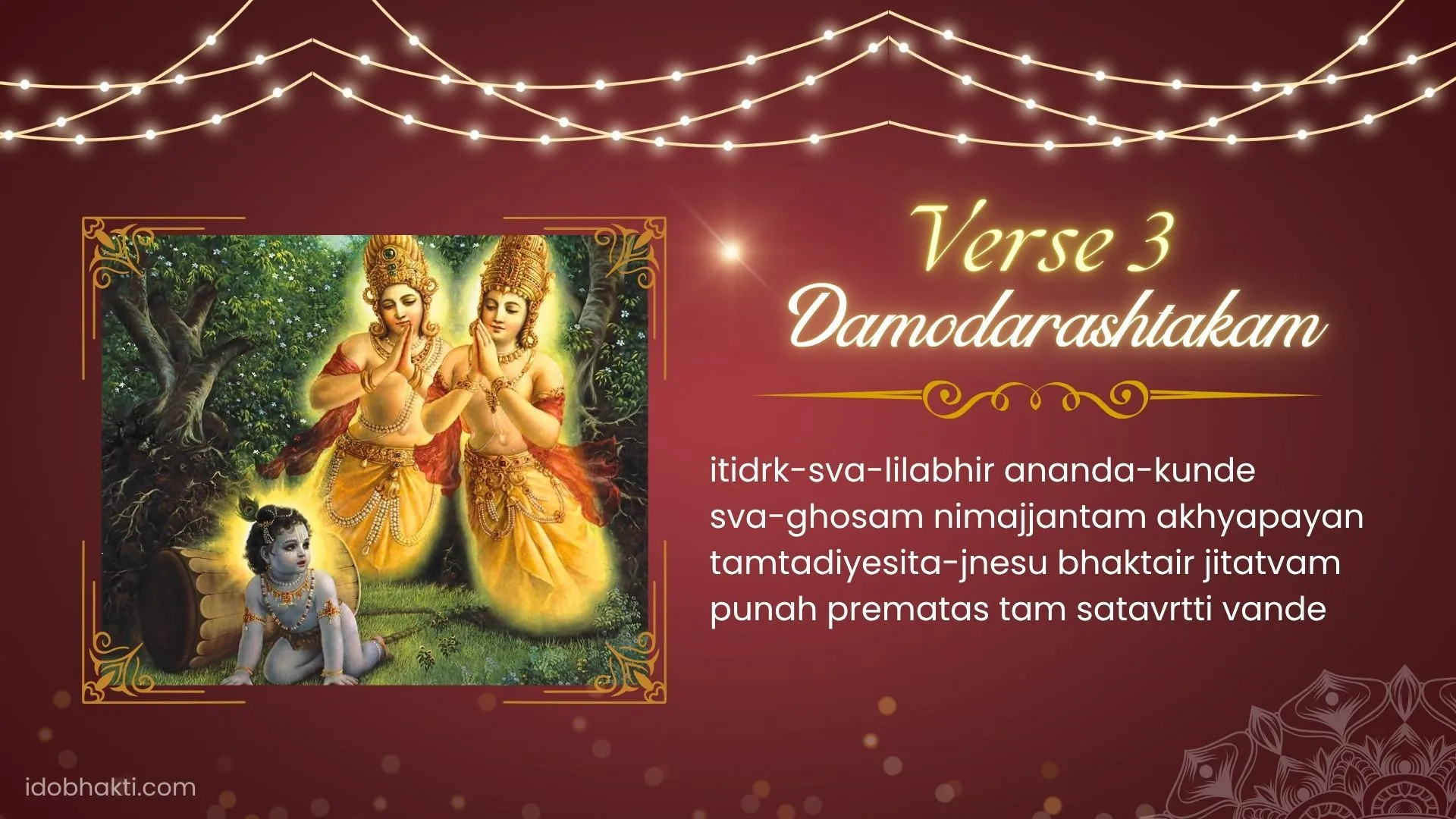
Verse 4: Renouncing Liberation for Love
varam deva moksam na moksavadhim va
na canyam vrne ’ham varesad apiha
idam te vapur natha gopala-balam
sada me manasy avirastam kim anyaih
“O Lord Damodara, although You can give all kinds of benedictions, I do not desire liberation or residence in Vaikuntha. My only wish is that Your form as Gopala, the cowherd boy, may always remain in my heart.”
This verse is a declaration of pure devotion (shuddha bhakti). Satyavrata Muni refuses liberation (moksha) or any heavenly pleasure. He only wishes to meditate on the sweet form of Bala Gopala Krishna — the butter thief, the mischievous boy of Vrindavana.
Devotion that seeks nothing in return — not even liberation — is considered the highest form of bhakti. It is love for love’s sake, the same love the gopis of Vrindavana embody.
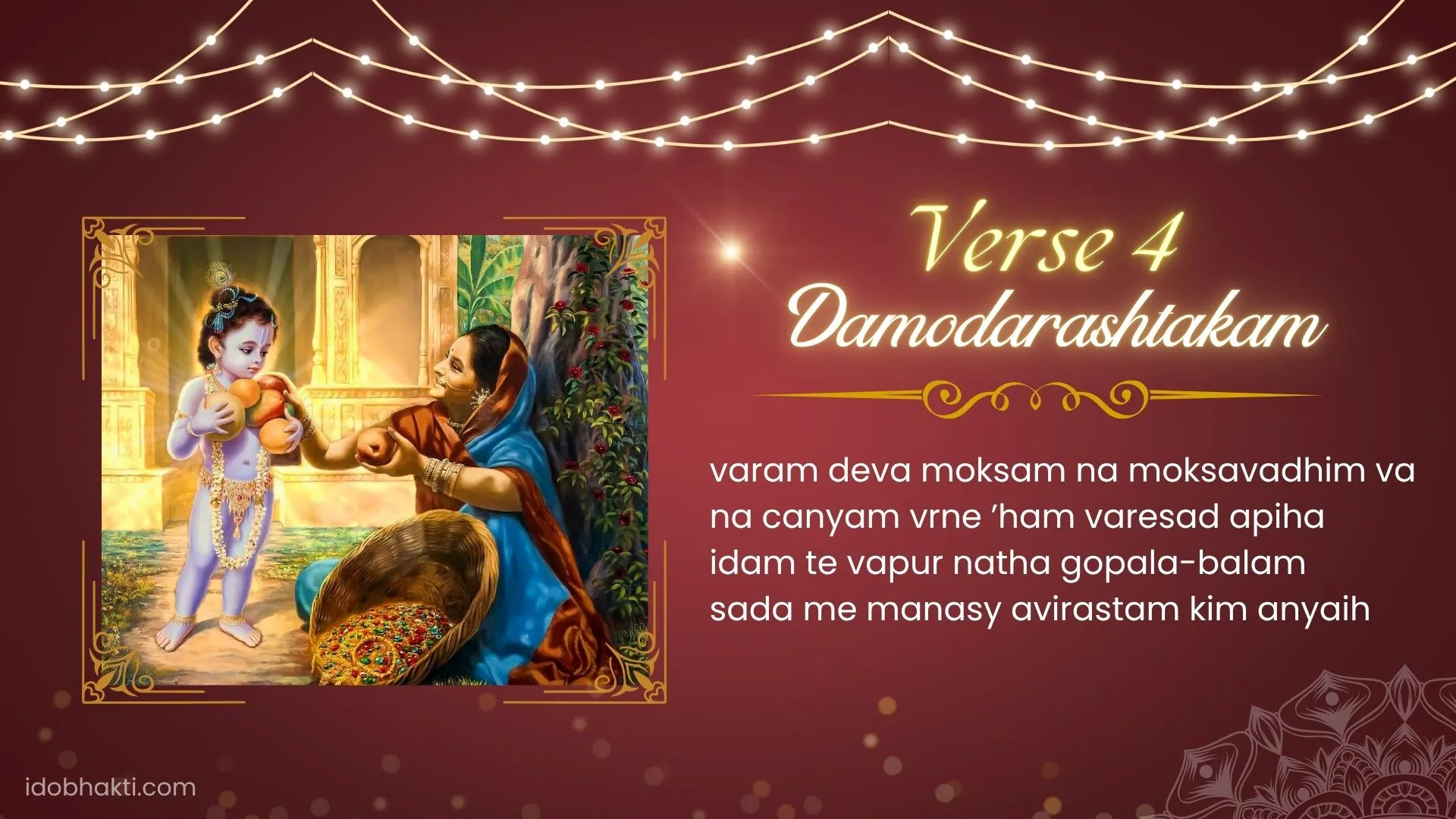
Verse 5: The Vision of Krishna’s Enchanting Face
idam te mukhambhojam atyanta-nilair-
vrtam kuntalaih snigdha-raktais ca gopya
muhus cumbitam bimba-raktadharam me
manasy avirastam alam laksa-labhaih
“Your beautiful lotus face, encircled by dark blue curls and kissed repeatedly by Mother Yashoda, has lips red like the bimba fruit. May this vision remain forever in my heart. Millions of other blessings are meaningless.”
Here, the poet prays for darshan, the divine vision of Krishna’s face — radiant, innocent, and filled with sweetness (madhurya). He acknowledges that the sight of Krishna’s smiling face is greater than millions of worldly gains.
Just as the gopis saw Krishna as the center of their lives, Satyavrata Muni longs for Krishna’s face to forever illuminate his heart.
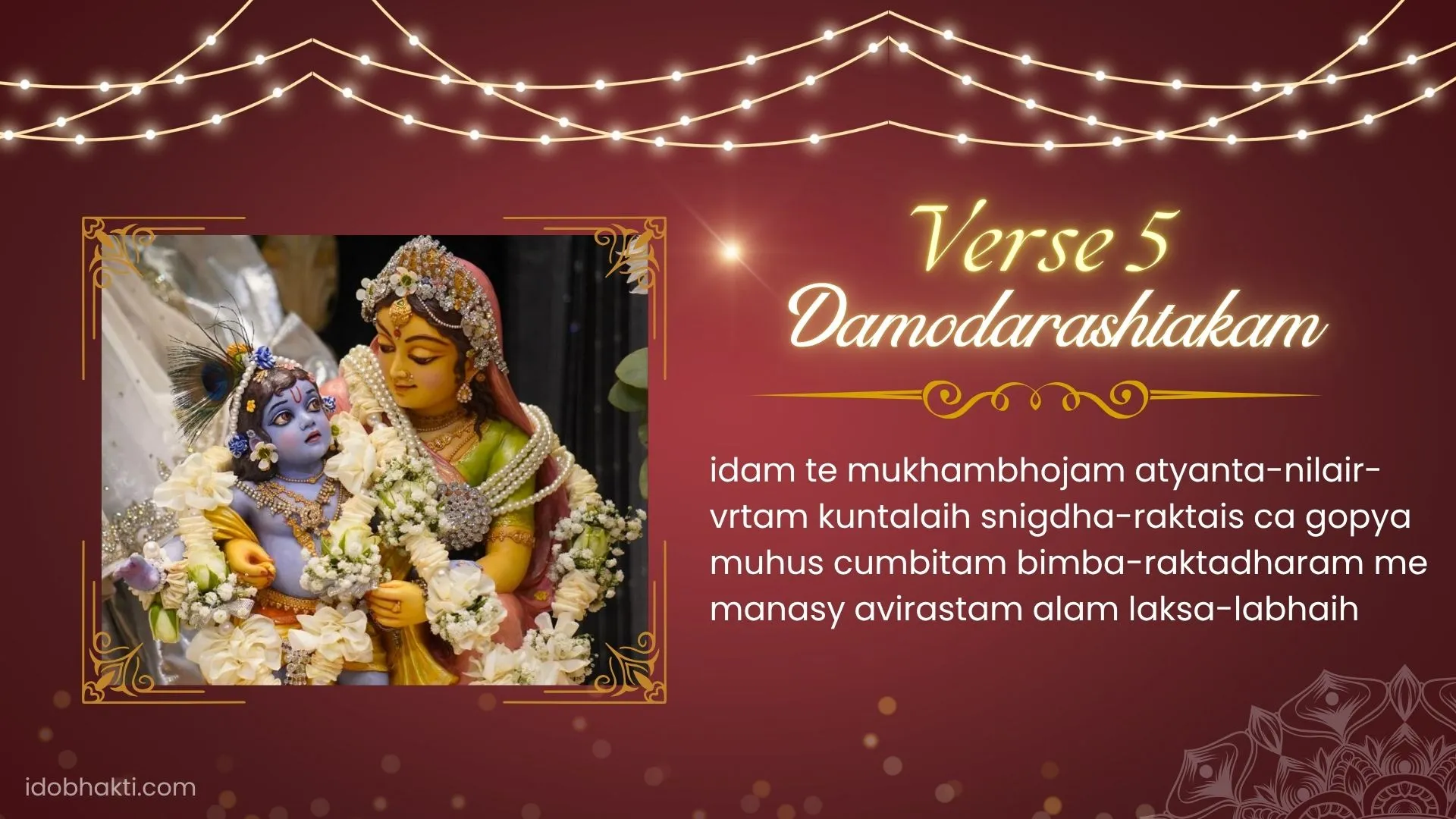
Verse 6: A Cry for Mercy
namo deva damodarananta visno
prasida prabho duhkha-jalabdhi-magnam
krpa-drsti-vrstyati-dinam batanu-
grhanesa mam ajnam edhy aksi-drsyah
“O Lord Damodara, O all-pervading Vishnu, please be merciful to me. I am drowning in the ocean of sorrow. Shower upon me Your merciful glance and appear before my eyes.”
Here the devotee, overwhelmed by humility, cries out for mercy. He acknowledges his suffering and helplessness in the material world and begs Krishna for His kripa-drsti, merciful glance.
Vaishnava acharyas explain that Krishna’s glance (drishti) itself can liberate and transform the heart. When the Lord’s mercy falls upon a soul, lifetimes of karma are burned away, and the heart blossoms with devotion.
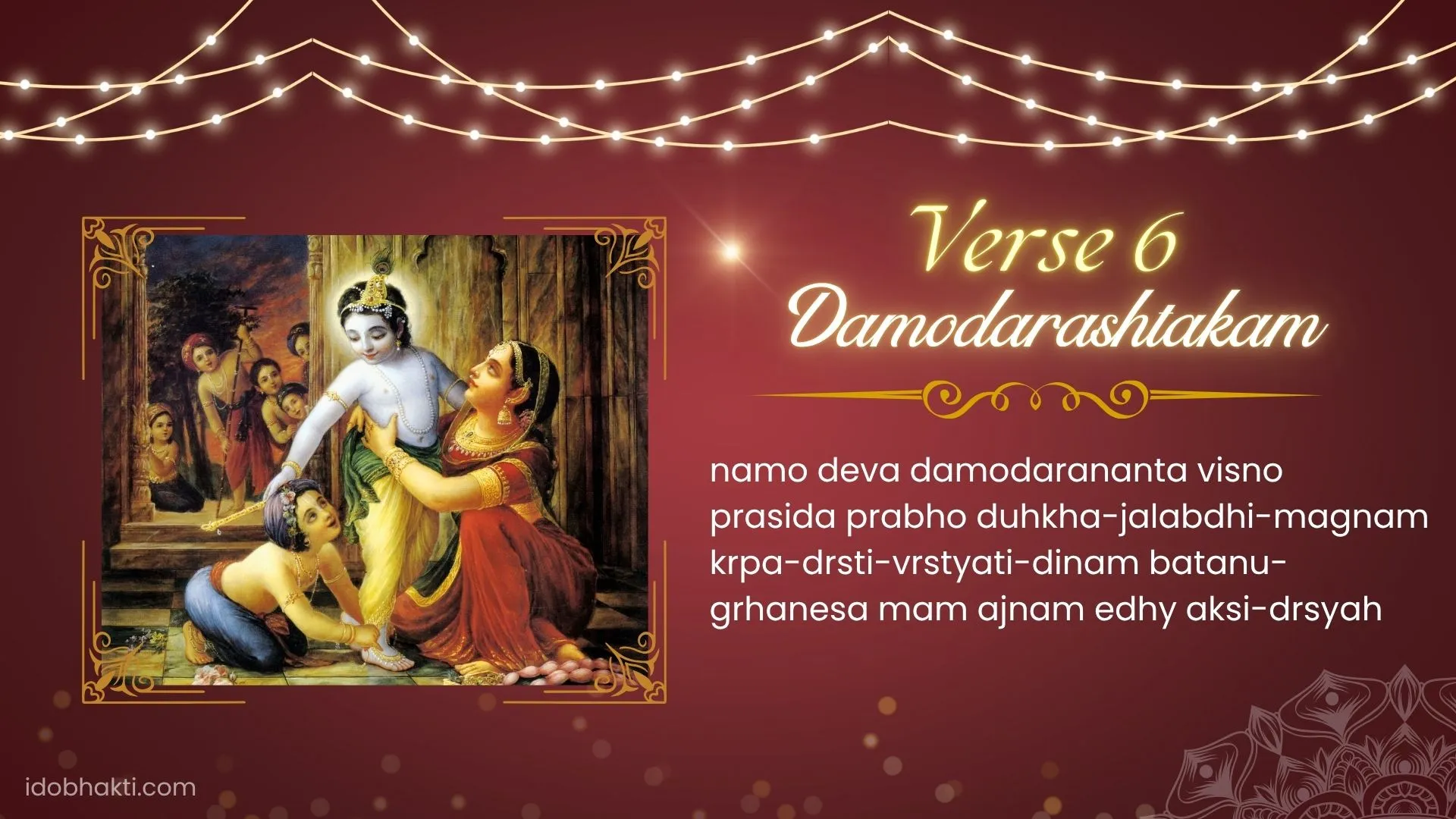
Verse 7: The Example of Kuvera’s Sons
kuveratmajau baddha-murtyaiva yad-vat
tvaya mocitau bhakti-bhajau krtau ca
tatha prema-bhaktim svakam me prayaccha
na mokse graho me ‘sti damodareha
“O Lord Damodara, You liberated the sons of Kuvera, Manigriva and Nalakuvara, and made them devotees. Please give me that same love and devotion. I have no desire for liberation.”
This verse recalls another episode connected to the Damodara Lila. After Krishna was tied to the mortar, He dragged it between two trees — the forms of the cursed demigod sons of Kuvera. When the trees fell, two celestial beings emerged and offered prayers to Krishna, liberated from their curse.
Satyavrata Muni uses this story to pray: “If You could liberate them, please bless me with the same gift of pure love.” This verse reaffirms that the devotee desires prema-bhakti, not mere freedom from suffering.
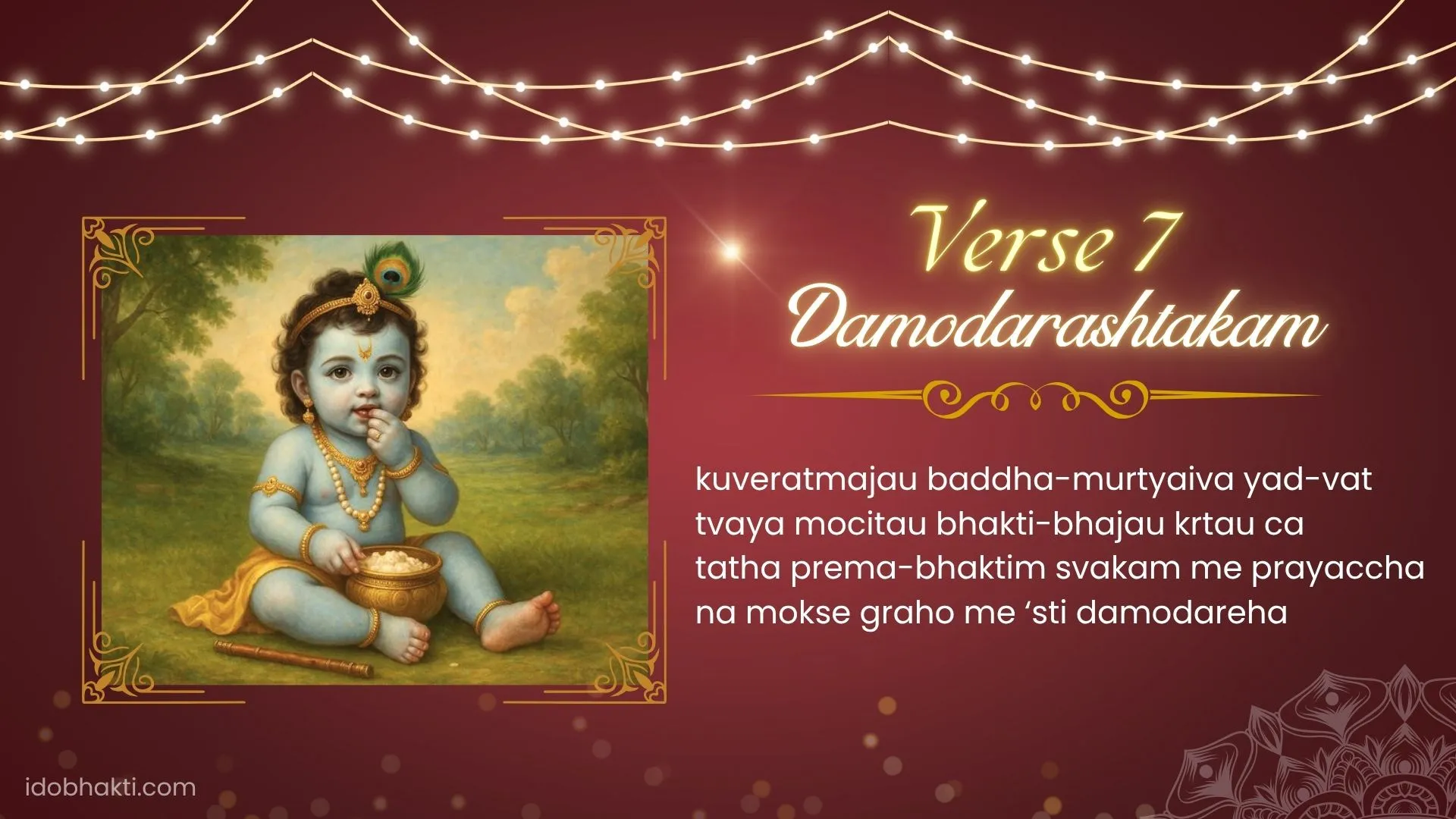
Verse 8: Glorification of Radharani and the Lord’s Infinite Pastimes
namas te ‘stu damne sphurad dipti-dhamne
tvadiyodarayatha visvasya dhamne
namo radhikayai tvadiya priyayai
namo ‘nanta-lilaya devaya tubhyam
“O Lord, I offer my obeisances unto Your belly, the abode of the universe, bound by Yashoda’s shining rope. I also bow to Srimati Radharani, Your most beloved, and to You, who perform unlimited divine pastimes.”
The final verse completes the prayer with universal glorification. The rope that binds Krishna’s belly symbolizes how the infinite becomes accessible through love. Satyavrata Muni offers respect not only to the Lord but also to Srimati Radharani, the supreme embodiment of devotion and compassion.
By remembering Radharani in the conclusion, the prayer affirms that all divine love flows through Her mercy.
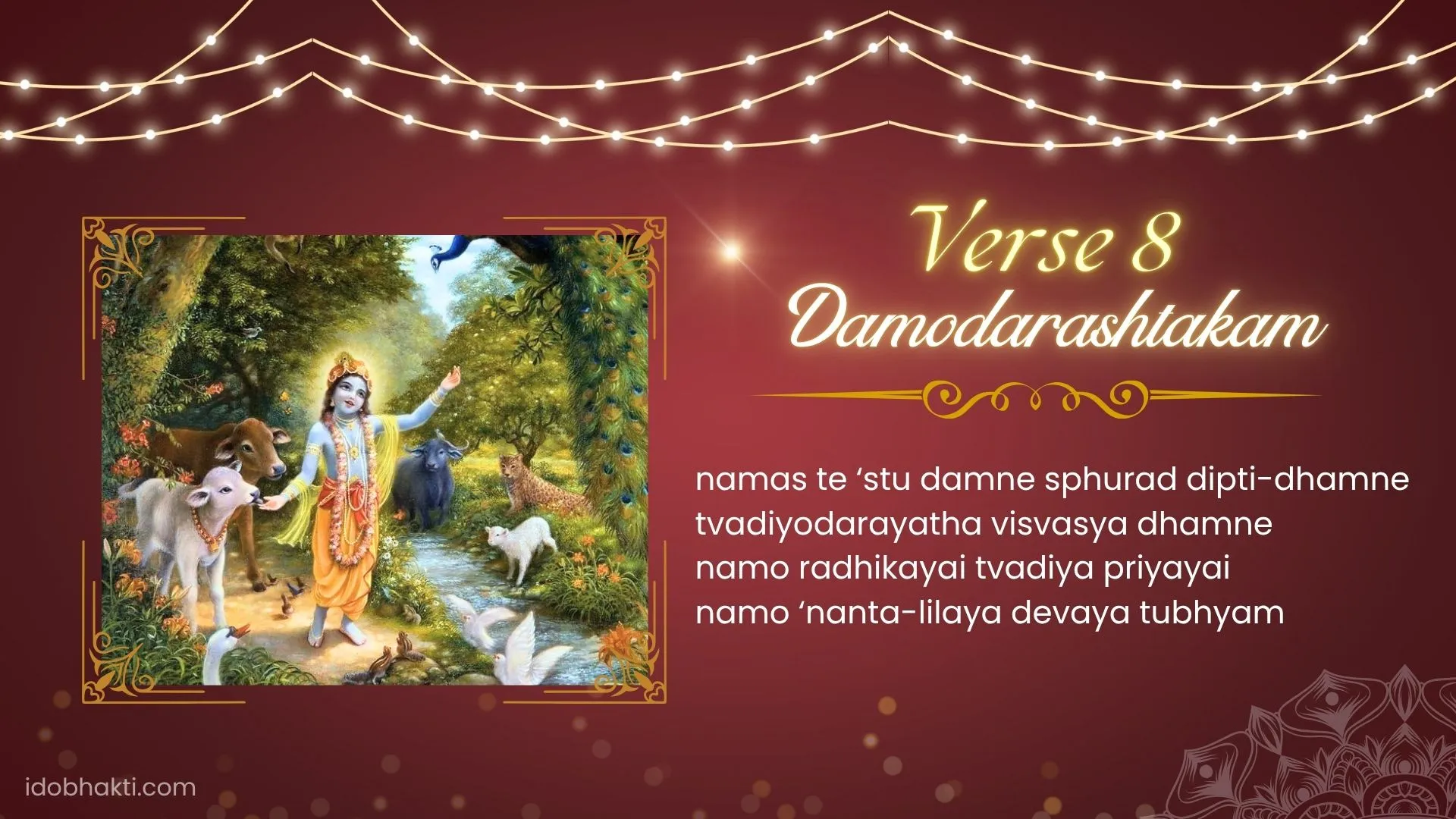
Spiritual Significance of Damodarashtakam
The Damodarashtakam is not merely a poetic composition but a profound meditation on the nature of God and devotion. Its verses reveal several spiritual truths:
-
God is conquered by love:
The Supreme Lord, though omnipotent, becomes subordinate to pure affection. This is the heart of bhakti philosophy. -
Devotion surpasses liberation:
The devotee does not seek to escape the world but to love and serve the Lord unconditionally. -
The Lord’s pastimes are eternal:
Krishna’s childhood pastimes in Gokula are not mythological; they are transcendental realities accessible through devotion. -
Radharani’s role in devotion:
All pure devotion is nourished by the mercy of Srimati Radharani, the Lord’s eternal consort. -
The symbolism of the rope:
The rope represents bhakti — the loving relationship that binds the infinite Lord to the finite heart of His devotee.
The Practice of Singing Damodarashtakam
During the month of Kartika (October–November), devotees worldwide perform the Damodara Arati each evening. The ritual involves:
-
Offering a ghee lamp (deep daan) to Lord Damodara while singing the Damodarashtakam.
-
Meditating on Krishna’s pastimes and praying for pure devotion.
-
Lighting lamps to symbolize offering the light of our hearts to the Lord.
Srila Prabhupada encouraged devotees to observe this month with extra austerity, chanting more rounds, reading scriptures, and performing devotional service. Every act of devotion during this month is said to yield multiplied spiritual benefit.
Conclusion: Bound by the Rope of Love
The Damodarashtakam is not just a song — it is the essence of bhakti yoga expressed in eight verses. It invites devotees to meditate on a loving relationship with Krishna, one that transcends awe and reverence and enters the realm of intimacy and affection.
When devotees sing these verses, they remember that the Supreme Lord — the master of all creation — once allowed Himself to be bound by a mother’s love. This lila teaches us that God is not distant; He is present wherever there is love, humility, and surrender.
As we offer lamps during Kartika, let us pray with Satyavrata Muni:
“O Lord Damodara, please let the vision of Your sweet childlike form remain forever in my heart.
Bind me not with rope, but with Your love — so that I may never forget You, life after life.”
